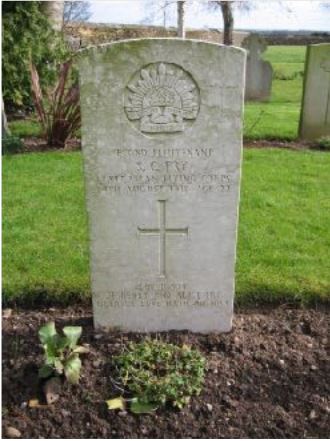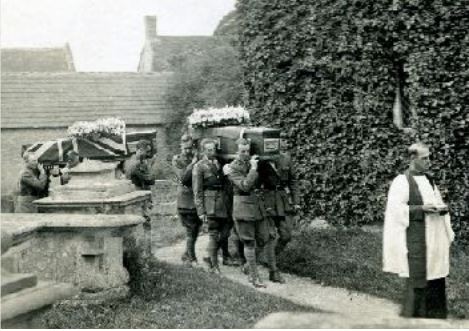8th Training Squadron, Australian Flying Corps

Sydney Charles Fry was born at West Maitland, New South Wales, Australia, in about September 1897, the son of Henry William and Alice Fry, who lived at 3 Michael Street, West Maitland.
He was educated at the Boys’ High School, East Maitland and was a member of the 6th Australian Light Horse in the Citizens’ Militia. After leaving school he worked as a shopkeeper within his father’s business.
Enlistment into the Army was at Liverpool Camp, NSW, on 18 July 1915, aged 19 years and 10 months, initially as a Private (or Trooper), number 1704, in the Light Horse (11th Reinforcement).
On 1 November 1915 he left Australia aboard HMAT Euripides bound for Egypt. Soon after arrival he spent 14 to 28 December 1915 in the 2nd General Hospital, Cairo, suffering from pneumonia. On 27 March 1916 he transferred to 115 Battery, 25th Howitzer Brigade, based at Tel-el-Kebir Camp, as a Gunner. There was a further transfer on 13 May 1916, to 13 Field Artillery Brigade, before he moved, once again, to 5th Division Ammunition Column (DAC) on 27 May, same year.
He left Alexandria on 18 June 1916, on the HMT Knight Templar, arriving at Marseilles on 25 June 1916, en route to the Western Front. He re-mustered as a Driver with 5th DAC for the period 8 August 1916 to 11 February 1917, before returning, at his own request, to being a Gunner. On 5 August 1917 he transferred to the Australian Flying Corps (AFC), as an Air Mechanic Second Class. After a twenty day stay at Farnbough, he arrived at the AFC Depot, Halton Camp, Wendover, Buckinghamshire, where he qualified as an engine fitter on 29 November 1917.
During the next couple of months there were two instances of indiscipline, for which he received punishment. On 6 December 1917 he was absent from a parade and received seven days confinement to camp and the forfeiture of three days’ pay. Between 9am on 4 January and 1.40pm on 6 January 1918 he went absent without leave and was confined to camp for a further eight days and was docked another three days’ pay.
A posting to Leighterton Aerodrome, Gloucestershire followed on 26 January 1918, where appeared to divide his time between 7th and 8th Training Squadrons.
His previous mis-demeanours did not appear to harm his promotion prospects, as on 12 April he was posted to No 2 School of Military Aeronautics, Oxford, as a Cadet Pilot Officer. A course at the Royal Air Force (RAF) Armament School at Uxbridge, Middlesex followed between 25 May and 22 June and he graduated as a 2nd Lieutenant and Pilot on 6 August.
On 24 August 1918, at about 11.45am, he took to the air from Leighterton in a Sopwith Camel (serial number C108): his first solo flight in that type. Eyewitnesses reported that the aircraft’s engine appeared to stutter at about 300 feet, as if the fuel mixture was not right. The machine went into a spin and there were reports of black smoke issuing from the engine: it crashed about 500 yards south of the aerodrome.
Sydney Fry was found dead in the wreckage, having sustained a fractured skull and other injuries. He was just short of his 22nd birthday.
A Court of Inquiry was convened later on the day of the crash and it heard from various witnesses. The CO of 8th Training Squadron expressed the opinion that the crash was down to engine malfunction, rather than any specific pilot error.
Second Lieutenant Fry was buried with military honours in Leighterton Church Cemetery on 28 August 1918, along with Cadet Roy Pillow who had sustained a fatal crash on the same day; a CWGC headstone now marks his grave.
A well attended memorial service was held for him at his hometown West Maitland Methodist Church. He was spoken of ‘as a young man full of brightness, fearlessness and devotion to duty by which he won popularity as a soldier abroad’.

Funerals of Fry and Pillow(Photographs from Geelong College Heritage website
Researched by Graham Adams 28 January 2018
